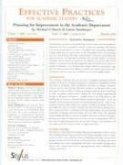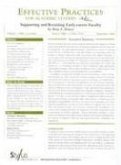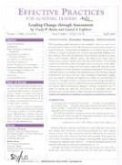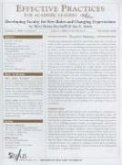Executive Summary Few things are more essential to the success of an academic institution than vital faculty members. Vital faculty members are passionately involved in and committed to their work; committed to the goals of their institutions; continually developing their teaching and research abilities; and consistently growing in and contributing to their disciplines. These desired faculty characteristics must be nurtured over the career continuum, a responsibility that often falls on the shoulders of busy department chairs and deans. The goal of this briefing is to assist academic leaders with the critical task of maintaining their faculty's vitality--a task otherwise known as faculty development. We begin this briefing by describing the changed societal conditions that make continuous faculty vitality essential not only to institutional success, but also to national welfare. Next, we describe how faculty development initiatives have changed in focus and form over time, as well as what themes and methods have persisted. Then we outline the key steps undergirding any successful faculty development program, offering more detailed guidance on two steps in particular: (1) assessing faculty and institutional vitality needs, using either a broad or targeted assessment approach; and (2) tailoring faculty development strategies to best meet the specialized needs of specific faculty groups, using case examples of new, midcareer, and senior faculty. We conclude with guidelines for designing and maintaining an institutional office for faculty development that can support and coordinate department-level initiatives.
Hinweis: Dieser Artikel kann nur an eine deutsche Lieferadresse ausgeliefert werden.
Hinweis: Dieser Artikel kann nur an eine deutsche Lieferadresse ausgeliefert werden.








